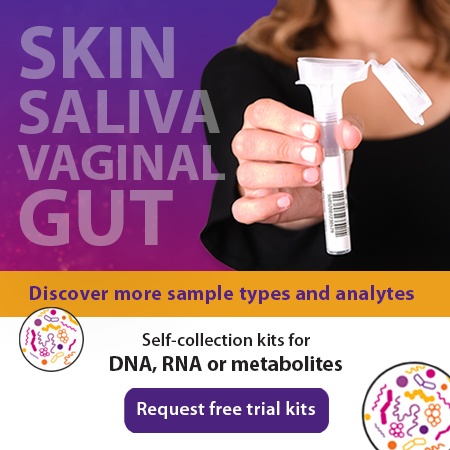2017-06-02
Due to its implication in the pathogenesis of several digestive disorders, including inflammatory bowel disease, the intestinal microbiota was a hot topic this year at Digestive Disease Week (DDW). The microbiome was featured in over 40 sessions as the target of various therapeutic approaches, including fecal microbiota transplantation (FMT), probiotics, prebiotics, and antibiotics. Here, we would like to share with you a few of the microbiome-focused takeaways from DDW.
Beyond bacteria
Recent advances emerging in DNA sequencing technologies for the characterization of both the bacterial and non-bacterial gut microbiota are providing deeper insights into the diversity of the gut microbiome. Several sessions presented results revealing the importance of the complex interaction in the gut between bacteria and phages, which are viruses that infect and replicate within the bacteria. It was shown that the composition of the phageome, the most abundant biological entity of the gastrointestinal (GI) system1, plays a critical role in maintaining the proper function of a healthy gut. Through their ability to infect and lyse bacteria, phages may be involved in the restoration of a low diversity microbiota dominated by a bacterial strain and in some cases, such as Ulcerative Colitis and Crohn’s disease, provide treatment by selectively depleting bacteria that may be responsible for the disease.
Regulation of Fecal Microbiota Transplant (FMT)
Despite a typical efficacy of ~90% in treating recurrent Clostridium difficile infections (versus 30-40% for antibiotic treatment), the lack of regulation of FMT therapy has raised concern among clinicians. With more data linking the population of the gut microbiota to a broad range of health issues, a need for regulation and rigorous screening of donor stool content was brought into the spotlight in several sessions. Due to its complex and highly variable composition, stool could potentially transmit undetected pathogens and constitute a health and safety risk; therefore, adequate donor screening is essential. In 2013, the U.S. FDA agreed to exercise enforcement discretion regarding Investigational New Drug (IND) requirements solely for treatment of Clostridium difficile infection (CDI) not responding to standard therapies. This prevailing FDA guidance stipulates that physicians may perform FMT outside of an IND application to treat CDI as long as they obtain informed consent. In 2015, Canada followed suit. A new draft guidance, released in 2016 for discussion purposes, proposes that “the FMT product is not obtained from a stool bank and that the stool donor and stool are qualified by screening and testing performed under the direction of the licensed health care”. Until appropriate policies regarding FMT therapy are developed, both countries currently exercise enforcement discretion with respect to their issued guidances.
High-resolution sequencing
To date, the majority of microbiome studies have relied on 16S rRNA gene amplicon sequencing for the analysis of microbial communities. A rise in popularity of Whole Genome Sequencing (WGS), was noticeable at DDW, due in part to continuous cost decreases. With more and more data comparisons between the sequencing approaches, WGS is emerging a winner 2. Compared to 16S rRNA gene amplicon sequencing, WGS can provide higher resolution insights into the gut microbiome by characterizing the gut microbiota as a whole, including the virobiome, mycobiome, and bacteriome, as well as interactions thereof. It seems there will be a lot more WGS on the microbiome horizon.
So what are your thoughts on these 3 key trends emerging from DDW 2017 and what do you think about the inevitable shift away from 16S rRNA sequencing towards WGS for gut microbiome analysis? We would love to hear your thoughts in the comments below. In addition, if you’d like information on optimized microbiome sampling kits or sequencing services, click below.
References
1. Mirzaei, Mohammadali Khan, and Corinne F. Maurice. "Menage a trois in the human gut: interactions between host, bacteria and phages."Nature Reviews Microbiology (2017).
2. Clooney, Adam G., et al. "Comparing apples and oranges?: next generation sequencing and its impact on Microbiome analysis."PloS one 2 (2016): e0148028.


